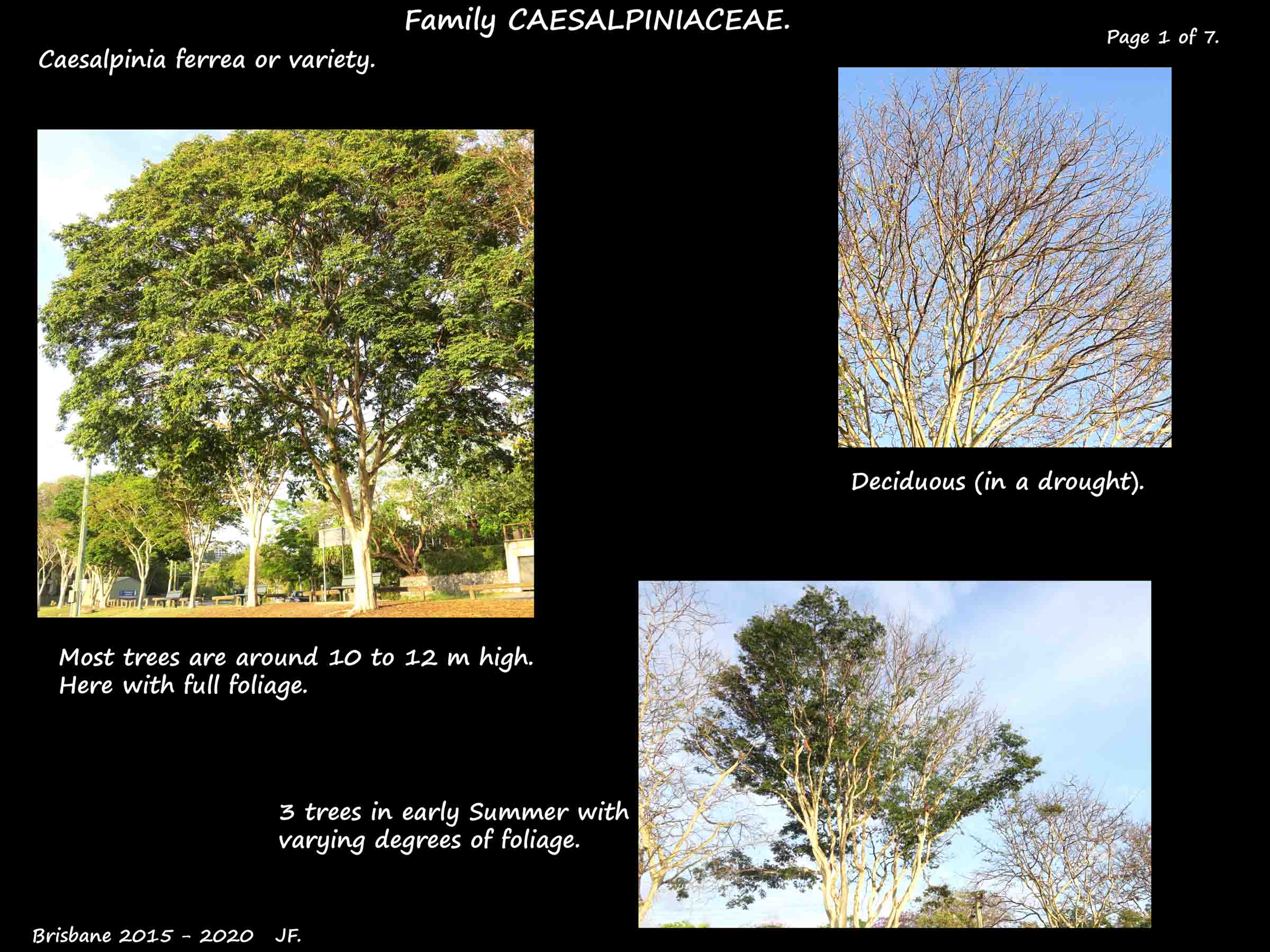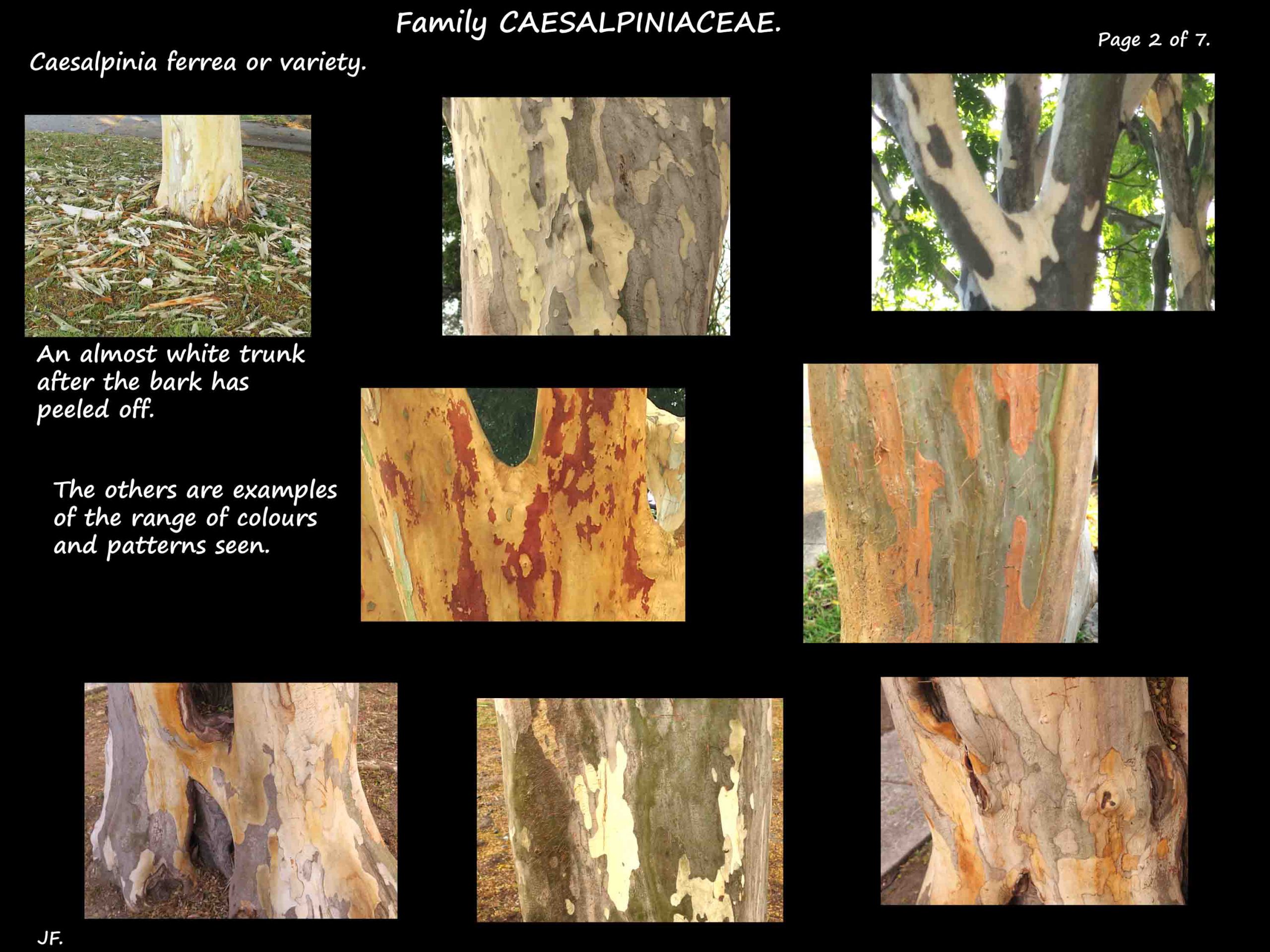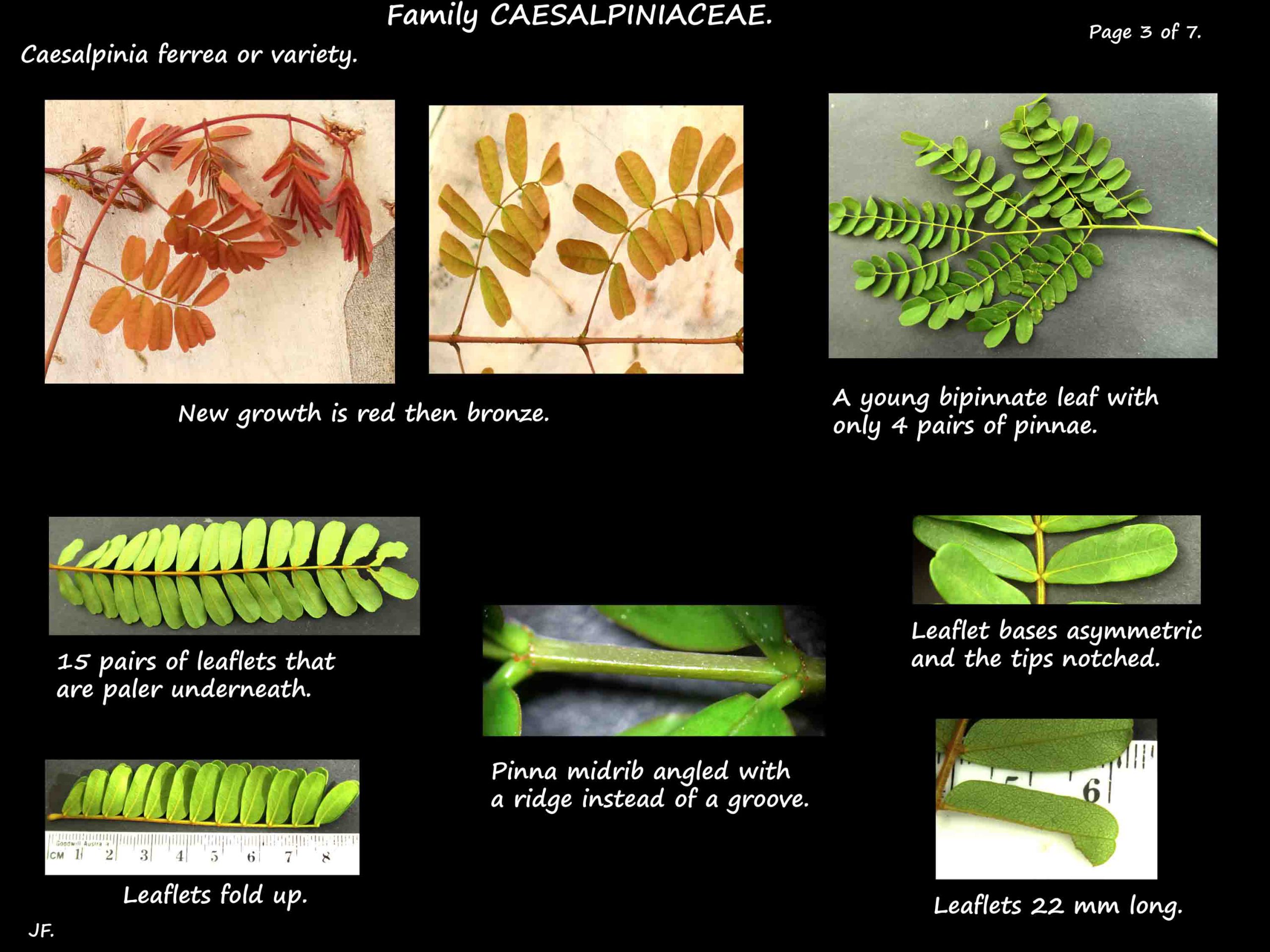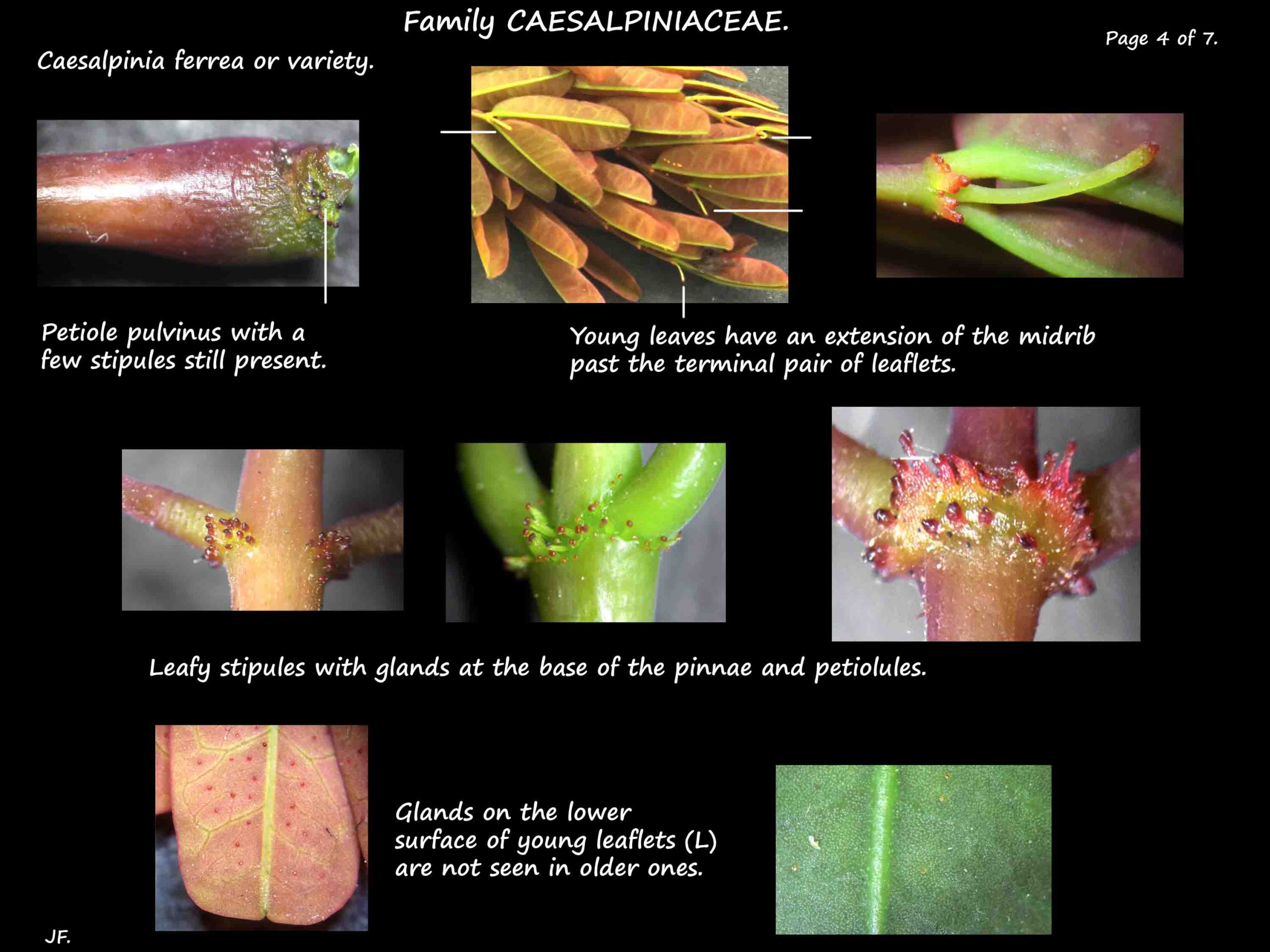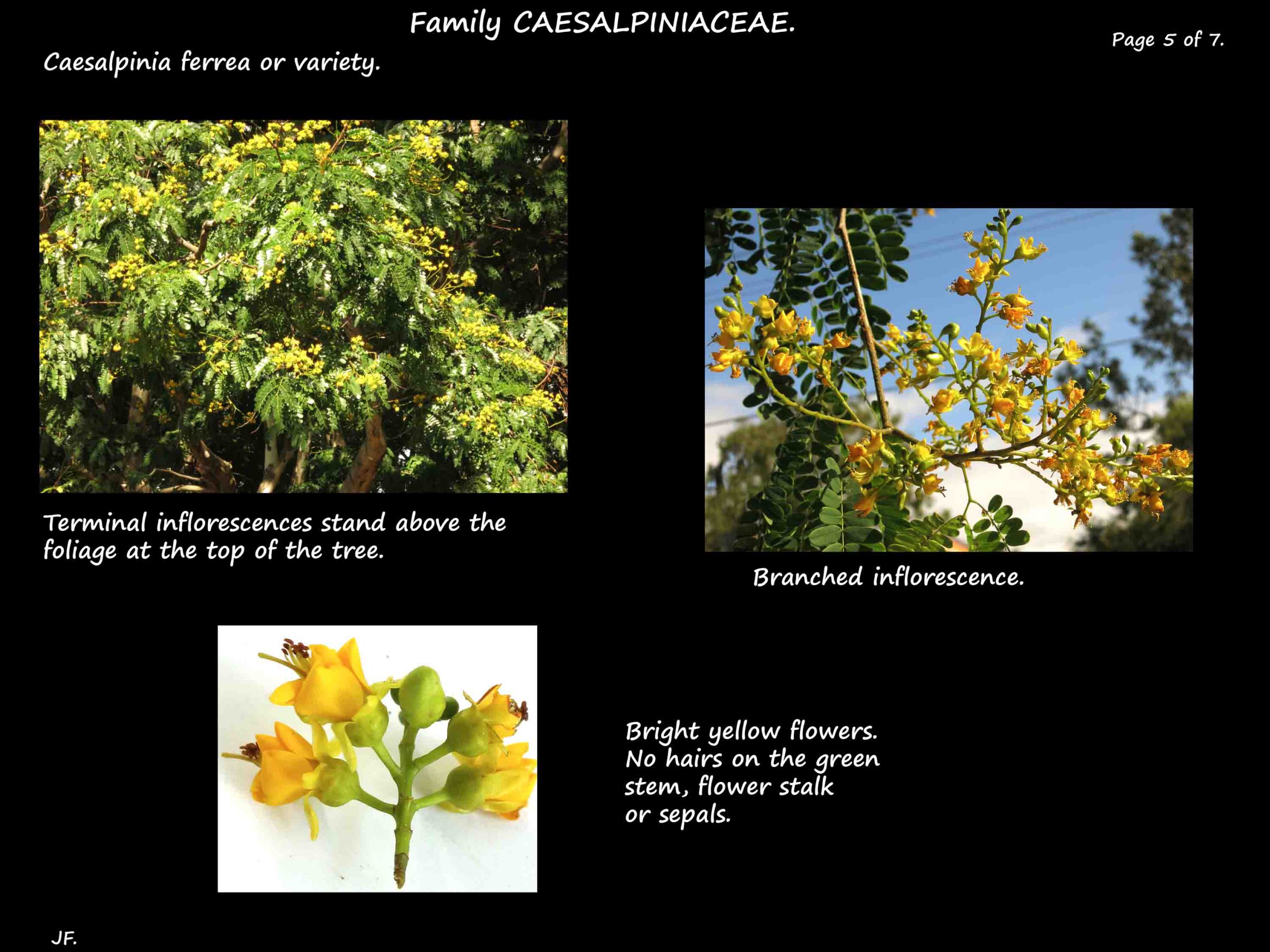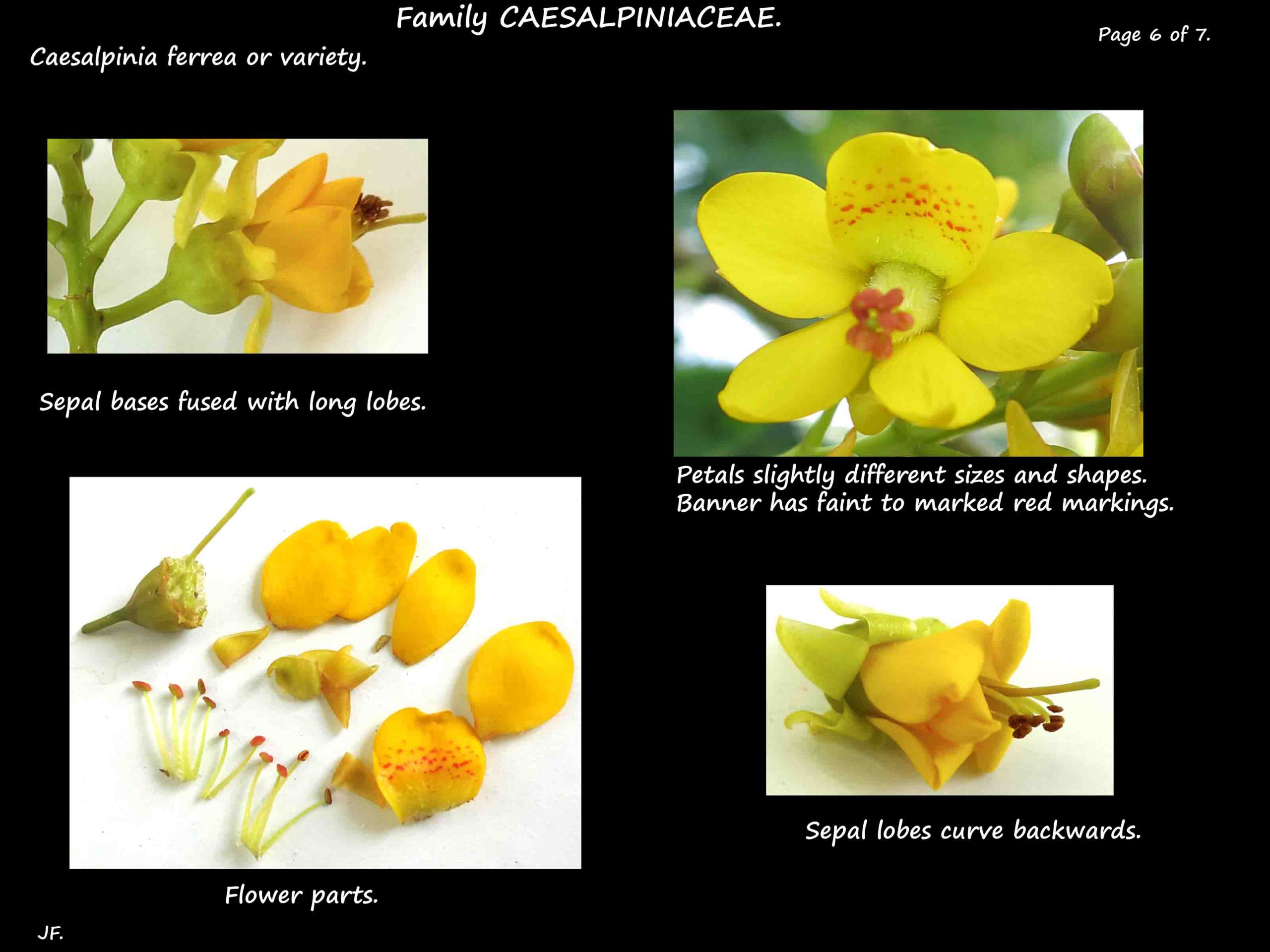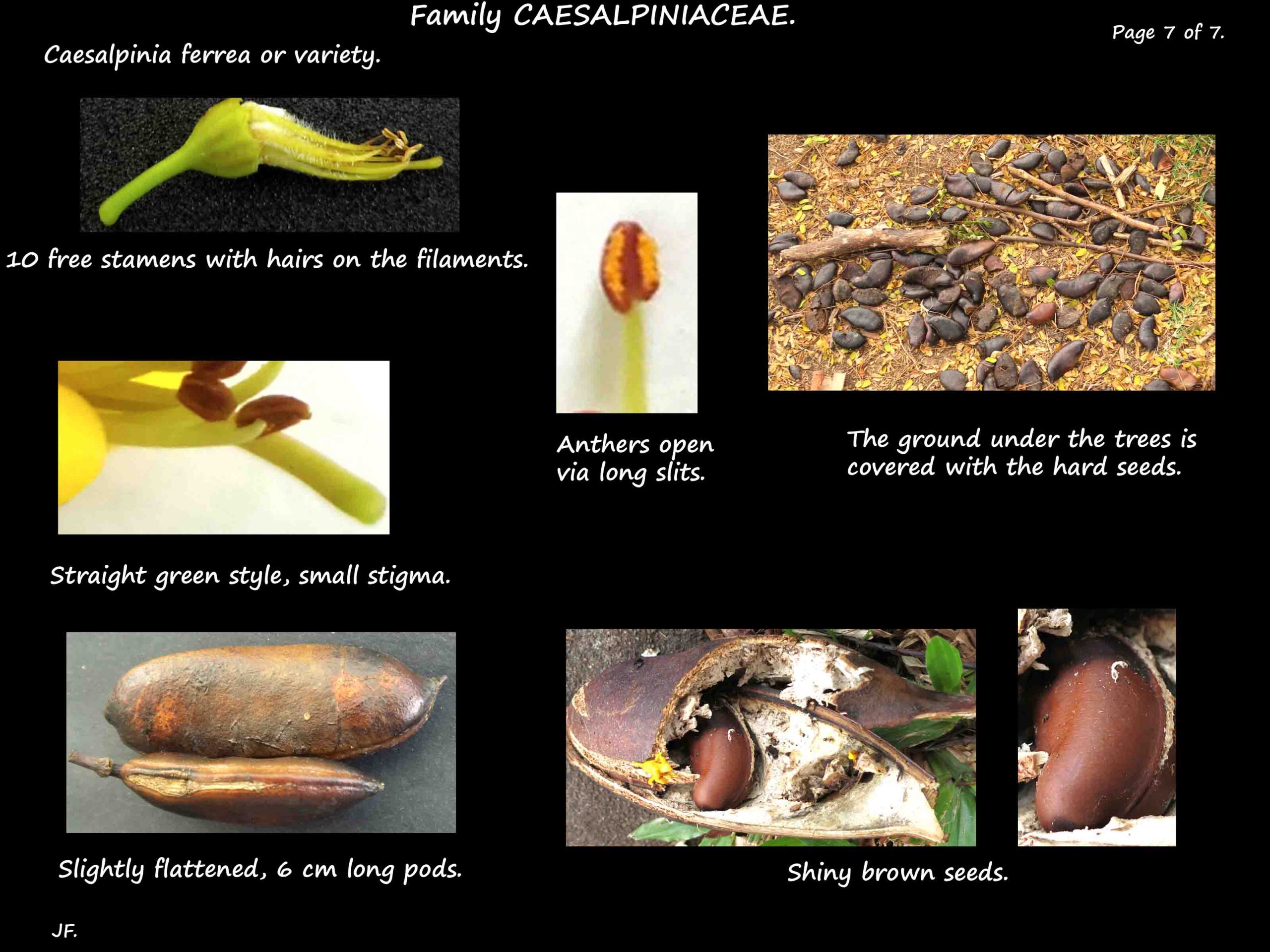Caesalpinia ferrea.
Family Caesalpiniaceae (sub-family Caesalpinioideae in Fabaceae s.l.).
It is occasionally seen as Libidibia ferrea but Libidibia is not recognised by World Flora Online.
The Leopard tree is native to Brazil but is a common street tree in Brisbane.
The City Council stopped using it about 10 years ago because of problems caused by the roots
and the masses of hard, slippery seed pods that cover the ground.
There are 4 varieties C. ferrea var. ferrea, var. glabrescens, var. leiostachya and var. parvifolia.
They are semi-deciduous trees from 10 to 12 (20) m high.
The most distinctive part of the trees is the trunk as the bark peels off.
The smooth cream to white trunk is patterned in a mosaic of light to dark grey, brown, greenish and reddish areas.
The alternate leaves are bipinnate.
There are lenticels on the stems and a pulvinus at the base of the petioles.
There are leafy, glandular stipules at the base of the petiole and petiolules.
Each leaf has around 15 opposite pairs of pinnae each with up to 15 or 20 pairs of leaflets.
Leaflets are on stalks or petiolules under 1 mm long.
The ovate to elliptic leaflets are up to 2.5 cm long with a slightly asymmetric base.
New growth is reddish and mature leaves are a mid to dark green.
Terminal inflorescences are branched clusters that stand above the foliage.
The bright yellow flowers are around 4 cm across.
There are 5 green sepals with their bases fused and triangular lobes.
Some trees have flowers with short sepal lobes while in others they are 7 – 8 mm.
Where the lobes are long they bend backwards.
There are no hairs on the inflorescence or flower stems or the sepals.
There are 5 free, bright yellow petals also without hairs.
The upper or banner petals has an area of small red markings across it inside.
Between the varieties this varies from faint to prominent.
There are 10 free stamens with hairs on the lower 2/3 of the filament.
They extend beyond the corolla.
There are hairs on the ovary.
There is a small stigma on the fairly straight style.
The fruit are indehiscent pods around 6 cm long.
The ovate pods are hard, shiny, and partially flattened with a beak at the end.
They contain a few shiny, dark brown seeds.
J.F.
